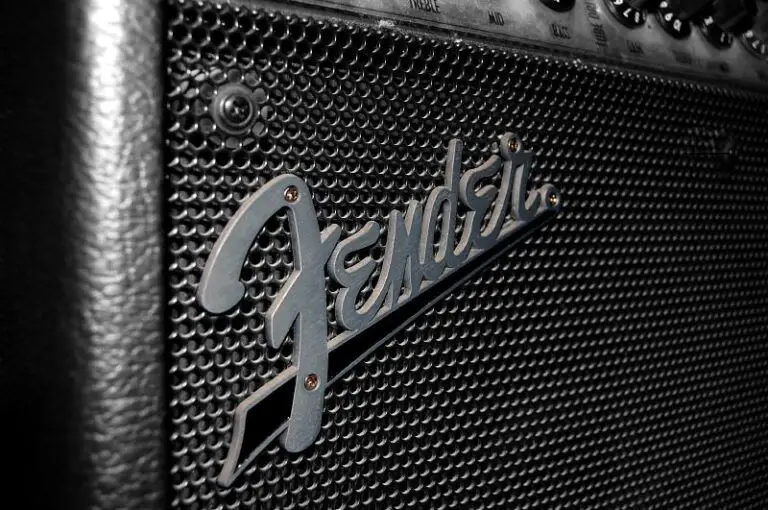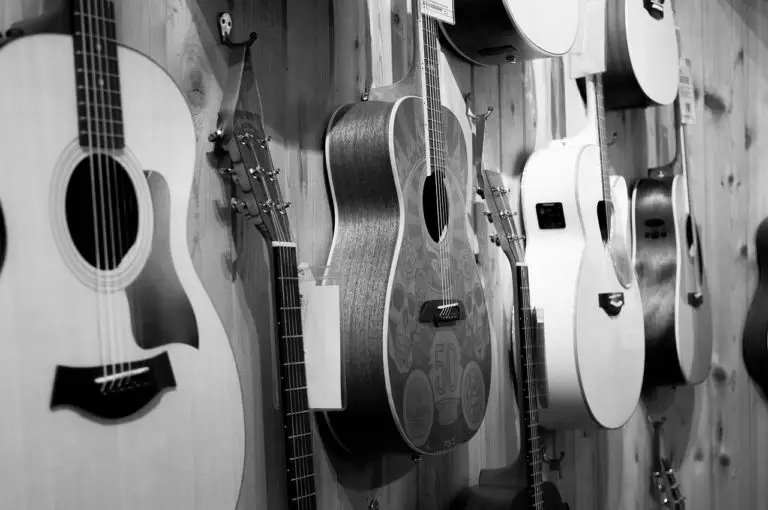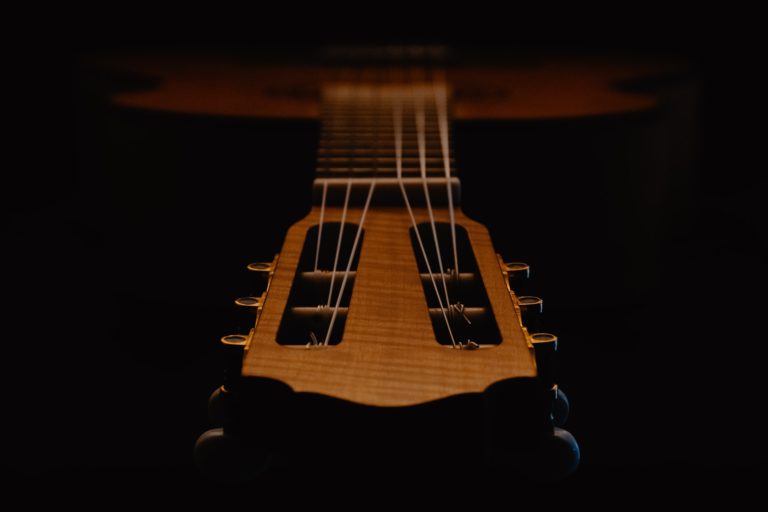What is a Mini Guitar? Your Guide To Small Guitars
When it comes to discussing just what is a mini guitar, defining the term is never exactly easy. Some think it could be a ukulele; others argue a travel guitar or a 3/4 model.
Classifying just what a mini guitar is will often refer to a 3/4 guitar, although 1/2 guitars, as well as ukuleles, may also fall under this pretext.
Mini-guitars serve a purpose for all kinds of musicians. They are perfect for teaching kids how to play the basics. And they are also popular for players who are constantly on the go.
Not only do mini-guitars have a niche appeal, but they have a light and breezy tone that is easy on the ear. With these becoming more and more common for musicians to use, just what is a mini guitar?
What is a Mini Guitar?
In the grand scheme of things, a mini guitar can be classified as anything that isn’t a full-sized model. This means it is dimensionally smaller than a parlor acoustic guitar – the smallest full-bodied guitar (100cm x 38cm).
However, within this scope is a plethora of different guitar types. This ranges from:
- 3/4 guitars (92cm x 34 cm)
- 1/2 guitars (86cm x 30cm)
- 1/4 guitars (77cm x 27cm)
- Ukulele (53cm x 15cm)
These different formats will cater to different needs as well as different ages. Most people will tend to consider a 3/4 guitar as a true mini-guitar. This is because both teens and adults use them, and many larger full-sized models can be scaled down to this format without compromising sounds. This goes for both acoustic and electric variations.
Some people may also claim that 1/2 guitars are also the standard bearer for the mini-guitar term. It comes as 1/2 acoustic guitars, the smallest version that can be tuned to traditional concert scales. They are a size that caters to young children and teaches them basic finger positions that can be adapted to a full-sized model.
3/4 vs 1/2 Guitars
The biggest debate around deciphering just what a mini-guitar is is whether a 3/4 or a 1/2-sized guitar is the better representative of their full-sized cousin. Even if both are just variations that serve the same purpose. So what do each of these models bring to the table?
3/4 guitars
You will find that 3/4 guitars are much more common than you might think. Originally, 3/4 guitars could be considered a natural stepping stone for pre-teens to hone their craft before switching to a full-sized model.
Sporting smaller necks but still maintaining an entire fretboard and 6-strings, it’s not too hard for young adults or even small adults to play comfortably and having to adjust too much in terms of style and sound.
Not only are necks slightly smaller, but you will also find they are thinner than their larger counterparts. You will notice this primarily with electric variants, which will be ultra-lightweight and easy to transport.
1/2 guitar
The 1/2 guitar is a perfect introduction to six-stringed instruments for young kids first starting. With sleeker bodies and smaller necks, little hands can grasp all the fundamentals without feeling overwhelmed.
As 1/2 guitars still mirror their larger variants, you can still use these to learn all the basics. Normally, 1/2 guitars are tailored towards primary school ages, ideally between 5-8 years old.
Unlike larger guitars, it’s more common to get 1/2 guitars in acoustic form instead of electric as it gives them a better sound and is much sturdier. It’s the perfect starting platform for anyone to learn from before advancing to larger models as they age.
How To Use Mini-Guitars
When using mini-guitars, it isn’t just about an age factor. It also comes down to their function and ease of use. So what can mini-guitars be used for?
Learning fundamentals
As discussed, smaller-bodied guitars are great for teaching young kids the basics. Ideally, from the age of 5 until teenage years, they provide a much easier method for children to learn basic chords and strumming without worrying about overstretching on a large model.
As kids develop and grow, they will find that they can translate their knowledge onto bigger models without forgetting what they have already learned. Whether fret positions, string selection, or finding the right tuning pattern, everything is relative as you work up sizes. This is why smaller guitars are perfect for kids learning the basics.
Traveling on the road
Believe it or not, full adults will deliberately look to smaller guitars if they always want to perform show after show. Many travel guitars are designed for smaller body formats rather than full-bodied instruments you would play onstage.
Buskers and street performers will often deliberately pick smaller models as they can hold them when standing. They are also lighter, meaning that performers can stand with them rather than sit playing. This gives them a greater presence on stage and makes them catch the eyes of the audience.
Lastly, smaller guitars are popular for travel as they are much lighter and easier to transport than full-bodied instruments. Rather than dragging around a large case, a smaller guitar is easily stored or packed into a rucksack. This gives these performers a greater understanding of where to perform and how they will travel.
Lighter sounds
For some, mini-guitars allow them to fine-tune a breezy and light sound. Rather than focusing on booming low notes, they will find it easier to tune up a guitar and get a light and breezy sound that is pleasant to the ear.
If someone uses a much smaller instrument, such as a ukulele, they will be tuned to higher chords due to only having four strings. This gives them the light and airy tones they are known for.
Are Ukuleles a Mini-Guitar?
When it comes to ukuleles, there’s often a debate as to whether they are classed within the traditional guitar family. This is because they are still constructed similarly, albeit in a much smaller body. But are they still a guitar?
A different construction
In principle, ukuleles can’t be considered a mini-guitar in the same sense as 1/2 or 3/4 variants. This is simply down to the fact that they aren’t a scaled-down version.
Even though a ukulele is half a size smaller than a parlor guitar and features a hollow sound, the similarities end here.
Ukuleles only feature four strings rather than 6. It is also tuned differently, with the four strings representing notes G, C, E, and A. With no B or D string, you will not be able to replicate the lower notes that guitars can produce
Playing style
With their much smaller body and compact structure, don’t expect to see anyone finger-tapping or performing virtuoso solos on a ukulele.
Instead, ukulele songs are very much chord-based, with just a few different chord patterns used to make up an entire song.
This gives the instrument is played a mix of light and airy tones. These combine to form soothing notes structured to give vocals a role in whatever song is played.
Guitarlele vs ukulele
Alongside ukuleles, you have the existence of a guitarlele. Considered a 1/4 guitar, guitarleles are considered the crossover point between guitars and ukuleles.
Unlike ukuleles, the guitarlele does have six strings. This means you have B and D strings, albeit if they are in a higher octave than larger models.
They can even be played like a guitar, sporting a scaled-down fretboard that can also mimic and cover larger models.
However, the sound generated is very much akin to a ukulele. The compact body and the smaller hollow space minimize bass sounds and produce high-treble chords.
This means that you will be better off using a playing style similar to a uke rather than looking to replicate what someone is producing on a guitar.
What guitarleles and ukuleles do provide is an instrument that is easy to transport and play on the street with minimal fuss. It’s a great option for anyone just sitting and busking on a street corner.
Conclusion
Many people will assume a mini-guitar is anything that isn’t a full-sized instrument. However, there is much more to that than meets the eye.
Naturally, ukuleles and guitarleles don’t necessarily fit the bill as their construction, sound, and playing style don’t correlate with how you would play a standard guitar.
Some may consider a 1/2 guitar a mini-guitar, too; however, its primary use as a training platform for young children limits the appeal and scope of that particular format.
So, it’s best to consider 3/4 guitars as the true mini-format. Not only do they relate to their larger cousins, but they are also suited for use across all styles and ages. It’s why deciding what a mini-guitar is is important for all guitarists.




![How To Clean Your Guitar Strings [two ways]](https://www.bythebarricade.com/wp-content/uploads/2022/02/How-To-Clean-Your-Guitar-Strings.jpg)




